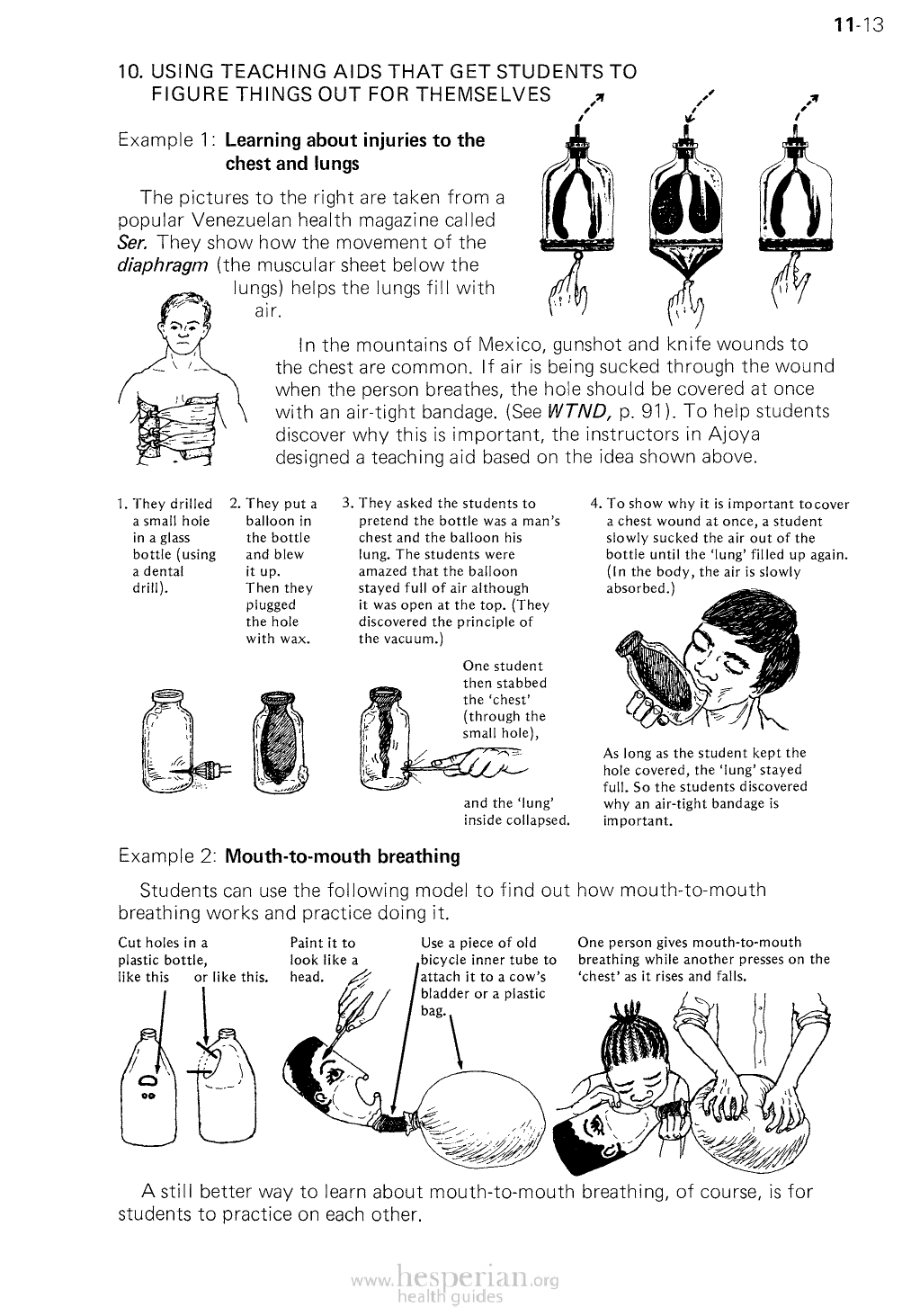
11-13
10. USING TEACHING AIDS THAT GET STUDENTS TO
FIGURE THINGS OUT FOR THEMSELVES
Example 1: Learning about injuries to the
chest and lungs
The pictures lo the right are taken from a
popular Venezuelan health magazine called
Ser. They show how the movement of the
diaphragm (the muscular sheet below the
lungs) helps the lungs fill with
air.
In the mountains of Mexico, gunshot and knife wounds to the
chest are common. If air is being sucked through the wound
when the person breathes, the hole should be covered at once
with an air-tight bandage. (See WTND, p. 91). To help students
discover why this is important, the instructors in Ajoya designed
a teaching aid based on the idea shown above.
1. They drilled 2. They put
a small hole a balloon
in a glass
in the
bottle (using bottle and
a dental
blew it up.
drill).
Then they
plugged
the hole
with wax.
3. They asked the students
to pretend the bottle was a
man’s chest and the balloon
his lung. The students were
amazed that the balloon
stayed full of air although it
was open at the top. (They
discovered the principle of
the vacuum.)
4. To show why it is important to
cover a chest wound at once, a
student slowly sucked the air out
of the bottle until the ‘lung’ filled up
again. (In the body, the air is slowly
absorbed.)
One student
then stabbed
the ‘chest’
(through the
small hole),
and the ‘lung’
inside collapsed.
As long as the student kept the
hole covered, the ‘lung* stayed
full. So the students discovered
why an air-tight bandage is
important.
Example 2: Mouth-to-mouth breathing
Students can use the following model to find out how mouth-to-mouth breathing
works and practice doing it.
Cut holes in a
plastic bottle,
like this or like this.
Paint it to
look like a
head.
Use a piece of old
bicycle inner tube to
attach it to a cow’s
bladder or a plastic
bag.
One person gives mouth-to-mouth
breathing while another presses on the
‘chest’ as it rises and falls.
A still better way to learn about mouth-to-mouth breathing, of course, is for
students to practice on each other.